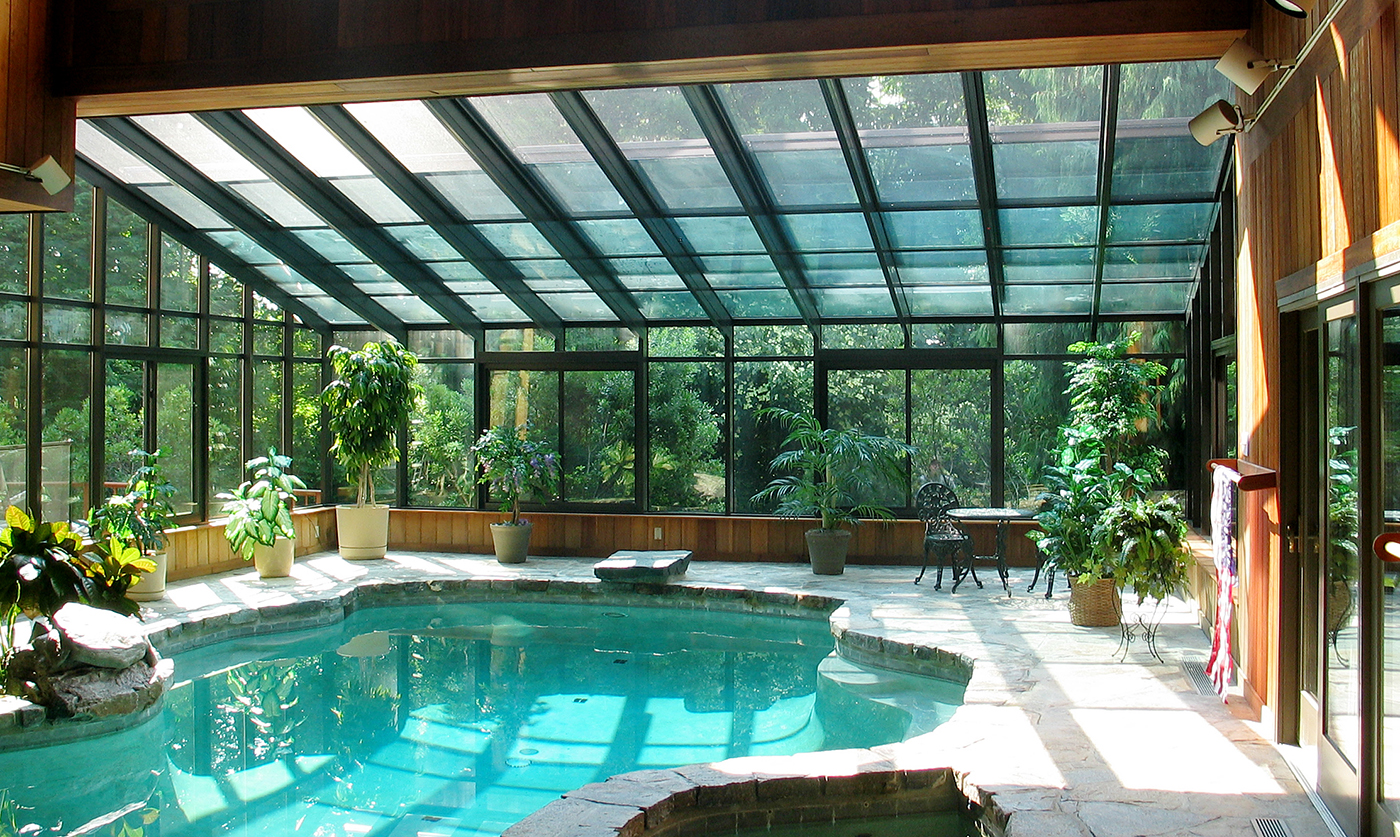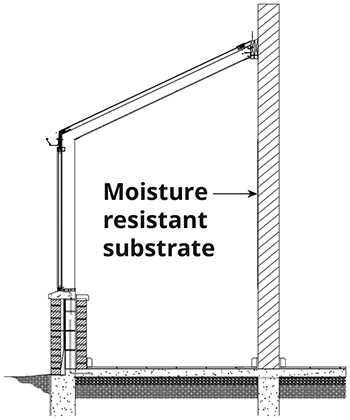Moisture Control and Prevention

Moisture Control
Controlling the moisture level in your environment will prevent dangerous mold growth and unsightly conditions, such as mildew, condensation and water marks/stains. To control moisture from penetrating your structure, the EPA offers these guidelines:
• Fix all leaks and seepage.
• Use exhaust fans to draw moisture to the exterior.
• Use dehumidifiers and air conditioners to reduce humidity in the air.
• When moisture is present on glass interiors, turn off appliances, such as humidifiers or kerosene heaters.
Condensation

Condensation occurs when the interior surface temperature of the system drops below the interior room dew-point temperature. Condensation can be controlled by manipulating the interior room temperature and humidity to lower the dew-point temperature and reduce the risk of condensation.
Common Causes of Condensation
• Extreme temperature differential between the interior and exterior.
• Excessive humidity in the interior space.
• Inadequate interior space ventilation.
Tips For Controlling Condensation
• Consider using a dehumidifier to control humidity. The ideal relative humidity is between 30-50% to maintain and protect health, comfort, the structure, and its contents per the EPA.
• Increase the air circulation to reduce or eliminate the condensation from forming. Use of a central heating system, ceiling fan, or floor fan is helpful.
• Reduce the air temperature during extreme cold-weather conditions. The ideal temperature in these conditions is
65-70° F, assuming the interior is a conditioned space.
• Ensure tight seals around glazing perimeters. Check if daylight can be seen along the seal perimeters from the inside of the room and feel for any air coming through.
• A thermally broken concrete slab at the sill for concrete applications will aid in condensation prevention.
Mold and Mildew

Mold and mildew has been attributed to many health problems. The two most common, asthma and allergies, can be prevented by controlling the humidity in the interior environment.
Controlling moisture in your building is the most important thing that you can do to prevent the infestation of mold and mildew.
Mold
Mold is a fungus that appears in patches of black, blue, red and/or green. Two things must be present in the environment for mold to grow: an organic food source, such as dirt, dust, or food, and moisture. When mold becomes apparent, the first step is to find the source of growth and eliminate it.
Steps to Remove Mold:
- Wear a mask and use rubber gloves.
- Apply a 10 percent bleach solution (your local home improvement store will carry mold removing solutions; however, bleach is recommended by the EPA).
- Dry all surfaces thoroughly.
- Carpeting, fabrics and ceiling tiles may need to be replaced once they become moldy.
Keep the area dry and clean. Given the right conditions, mold can grow back in as little as 72 hours, so the affected area must be monitored regularly and treated at the first sign of mold.
Mildew
Mildew is a fungus that is identified as a patch of gray or white fungus on a surface. Unlike mold, mildew is easily treated with a store-bought chemical and a soft brush.
Controlling Moisture in Glass Structures

It might be difficult to maintain a dry and clean environment in a glass structure, especially when you have a number of plants in the area. Proper use of dehumidifiers, fans, vents, windows, thermostats and moisture gauges can help control moisture levels; thus, preventing mold and mildew growth.
Sources of excess moisture
-
- Humidifiers
- Indoor pools and spas
- Long showers
- Running water
- Boiling or steaming for cooking
- Growing plants
- Air-drying clothes indoors
A tight, energy-efficient building will hold more moisture, making it important to control the moisture levels. Without proper vapor barriers, damage can occur from moisture buildup. Use a humidity indicator to measure the relative humidity in your house.
Exteriors
Mold can grow not only inside the structure, but also on exterior surfaces. Since the exterior climate and moisture cannot be controlled, it is important to focus on the mold’s food source. Leaves and dirt are natural organic food sources. Cleaning the outside glass and frame periodically will help prevent mold growth. Keeping weep holes clear and unclogged for proper weeping of the room will also aid in the moisture control inside the room.
Environmental Control Systems
To minimize humidity and create a more comfortable atmosphere, an environmental control system including dehumidification options is recommended. This system can control the environment automatically including ridge and eave vents for air circulation, as well as heating and cooling systems. Dehumidifiers create a more comfortable environment within high-humidity areas. A dehumidification system can both cool and heat the air inside the enclosure as well as alter the water temperature in pool enclosures.
Moisture-Resistant Materials
Building Materials
Maintaining easy access by attaching a glass enclosure to the main building is a wise choice, but certain measures should be taken to ensure that damage from moisture will not occur, particularly with high-humidity applications, such as pool enclosures. The main structure’s wall, which will be exposed to the pool environment, should not be drywall. Due to the high humidity and the potential for water to come in direct contact with the wall, materials such as marble, brick, stone, and cement blocks are better selections, since they can be water-sealed. When walls are sealed, mold and fungus cannot form on the material or develop behind it. Sealed walls create a safer environment for the occupants of the main structure and the enclosure.


Environmentally-Appropriate Décor
With any glass structure that may present a high-humidity situation, moisture will build up in the air. If the air becomes saturated, moisture can cause damage to interior décor and furniture. For this reason, it is important to ensure all furniture selections, storage containers, and any other items in the room are safe from high humidity and water exposure. Outdoor materials such as vinyl and natural stone will not rust or rot, and can be safely used in the enclosure. Outdoor lighting with enclosed bulbs, flooring with slip resistant traction, and water tight storage containers are all good choices to consider when designing the interior of the space.

